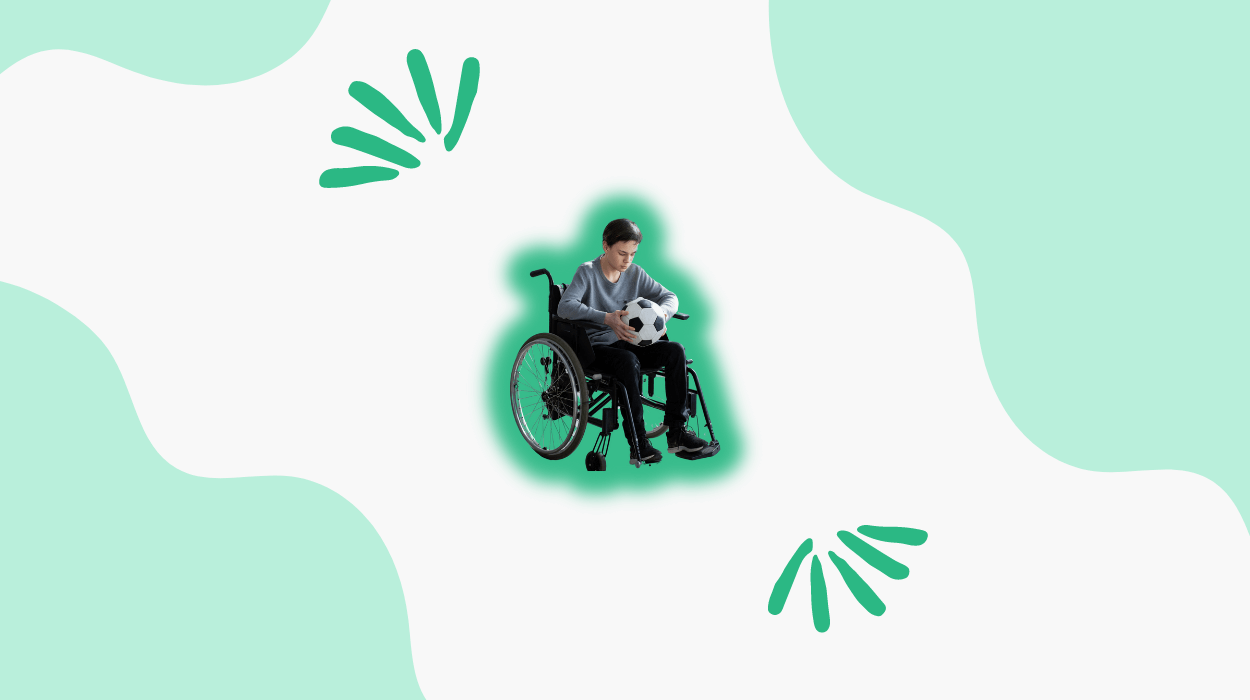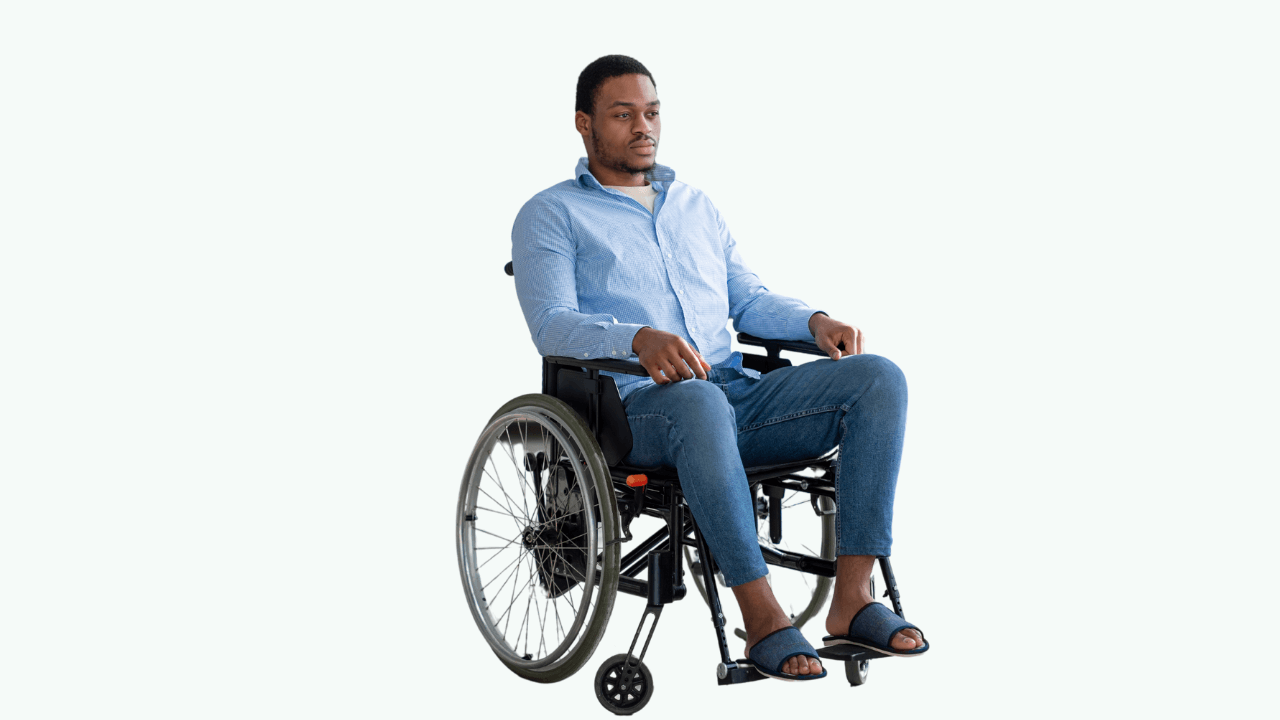

Anxiety episodes may range from mild to severe, inducing a fight-or-flight response in the body. Paralyzing anxiety is a debilitating response that may affect anyone and render them immobile (unable to move) when faced with threats or overwhelming stressors.
During a paralyzing anxiety episode, your legs and arms may feel heavy and immobile, and you might struggle to process your surrounding environment.
Paralyzing anxiety manifestations may lead to difficulties in daily functioning, work performance, and relationships. Understanding the potential triggers, seeking medical support, and implementing healthy coping strategies might reduce the severity of paralyzing anxiety.

Paralyzing anxiety is a severe anxiety disorder characterized by a profound state of extreme anxiety levels. Unlike general anxiety, paralyzing anxiety temporarily freezes the body in response to detected threats, impairing physical and emotional well-being.
This condition is a severe form of the body’s automatic response, often called the “freeze” aspect of fight, flight or freeze. While everyday stress/anxiety triggers a “get up and go” response, paralyzing anxiety might lead to a state of immobility.
In paralyzing anxiety, you may experience symptoms like muscle tension, shaking, or rapid heart rate. The physical signs may be paired with emotional responses like panic, fear, and avoidance behaviors.
| Symptoms | Impacts |
|---|---|
| Overwhelming fear | Strained relationships |
| Physical tension | Impaired work performance |
| Decision paralysis | Neglect of self-care |
When experiencing paralyzing anxiety, you may encounter a temporary state of physical paralysis, where you are not able to move or react. This state may be referred to as “Physical Anxiety Paralysis.”
During episodes of physical anxiety paralysis, you may find yourself unable to initiate or control your physical abilities, including movement, cognition, and speech. It may manifest as a profound sense of being frozen in place, making even simple tasks challenging.
Besides physical immobility, you may encounter signs like numbness in the limbs, tingling sensations, tense muscles, and tremors. These physical manifestations can intensify the feeling of being trapped by anxiety.
Emotional anxiety paralysis may render you emotionally immobile, which may negatively impact your cognition, decision-making abilities, and speech.
When experiencing emotional anxiety paralysis, you may feel emotionally frozen and overwhelmed by intense feelings of panic, fear, worry, or impending doom.
It may lead to a complete shutdown of your emotional system, possibly affecting your work performance, social interactions, or even intimate relationships.
To further understand emotional anxiety paralysis, let’s explore its manifestations in a structured manner:
| Symptoms | Impact | Coping Strategies |
|---|---|---|
| Feeling emotionally overwhelmed | Strained relationships and impaired daily life | Practicing mindfulness and seeking professional help |
| Intrusive thoughts and excessive worry | Hindered work performance and social interactions | Engaging in relaxation techniques and developing personalized coping mechanisms |
| Isolation and potential depression | Neglect of self-care and mental health | Participating in therapy and utilizing grounding techniques |
Biopsychosocial factors, environmental stimuli, and abrupt activation of the sympathetic and parasympathetic nervous systems may induce paralyzing anxiety in response to a real or perceived threat.
Phobias and inescapable social scenarios like public speaking or meeting new people may trigger intense anxiety responses. These situations may evoke overwhelming fear and prevent you from engaging in everyday activities.
Variations in the activation threshold of the sympathetic nervous system may influence how people respond to perceived threats. Those with a lower threshold may experience intense anxiety reactions, potentially leading to paralysis in anxiety-inducing situations.
People who undergo chronic stress from relationships, work, or other life circumstances could have extreme anxiety flare-ups. Encountering any trigger of past trauma experiences may activate the body’s fight-or-flight response, potentially inducing paralyzing anxiety.
Creating personalized coping strategies tailored to personal needs is essential for effectively managing paralyzed anxiety.
Here is a table illustrating some practical strategies to help cope with paralyzing anxiety:
| Coping Strategies | Description |
|---|---|
| Practice Deep Breathing | Engaging in deep breathing exercises may help regulate the nervous system and promote relaxation. It could aid in reducing severe anxiety flare-ups. |
| Mindfulness Techniques | Use mindfulness practices such as meditation to focus on the present moment and reduce anxiety. Paying attention to your breathing or ambient sounds might be a way to encourage mindfulness. |
| Physical Exercise | Integrate regular physical activity to release endorphins, improve mood, and reduce feelings of anxiety. Engage in activities that elevate heart rate, like running, weight training, cycling, or HIIT. |
| Journaling | Jot down your thoughts and feelings to process emotions and gain clarity on anxiety triggers. It could help track and avoid severe anxiety triggers. |
| Seek Support | Reach out to a mental health therapist, trusted friend, or support group to talk about your feelings and fears. You may consult a mental health professional or use online resources to address elevated anxiety. |
An approach comprising both medications and therapy may be employed to manage paralyzing anxiety. The treatment intervention and timeframe may vary from person to person and according to the doctor’s recommendation.
Cognitive-behavioral therapy (CBT) may be recommended to help people challenge negative thought patterns and behaviors. Regular CBT sessions might lead to noticeable improvements in reducing paralyzing anxiety symptoms.
Through therapy, people can develop coping mechanisms, learn relaxation techniques, and gain valuable insights into their anxiety triggers. Therapy may be complemented with medications (under the supervision of a mental health professional).
Antidepressants like selective serotonin reuptake inhibitors, benzodiazepines, and serotonin and norepinephrine reuptake inhibitors are typically prescribed. These may help reduce the severity of paralyzing anxiety symptoms.
Paralyzing anxiety can make implementing personal self-care daunting. Everyday tasks like caring for nutrition, exercise, and grooming could be overwhelming for people with paralyzing anxiety.
It could make it difficult for a person to practice regular hygiene, leave the house, express feelings and needs, and seek help from others. This may lead to a neglect of self-care or self-help, which are essential components of anxiety management.
Setting realistic boundaries, practicing self-compassion, and engaging in mindful activities (like meditation, grounding exercises, or deep breathing) may help reduce anxiety severity.
Paralyzing anxiety could negatively impact interpersonal dynamics, hindering effective communication and healthy relationship behaviors. It may raise significant challenges in maintaining strong and fulfilling connections with others.
People experiencing paralyzing anxiety may struggle to express their thoughts/emotions clearly to their partners. The lack of open communication may create misunderstandings, remove trust, and foster feelings of isolation within the relationship.
Those grappling with paralyzing anxiety may exhibit avoidance behaviors, like running from difficult conversations or withdrawing from social interactions. This avoidance may deepen existing relationship issues and create a rift between partners.
People with paralyzing anxiety often find themselves paralyzed by fear or worry, making it challenging to navigate disagreements and find mutually beneficial solutions.
People with paralyzing anxiety often find it tough to access, process, and regulate their emotions, which is essential for maintaining good mental health. This emotional paralysis may exacerbate anxiety symptoms, further impacting daily functioning and overall life quality.
If left unaddressed, paralyzing anxiety could manifest into severe neurological concerns like depression, obsessive-compulsive disorder, or social anxiety disorder.
Work anxiety might manifest in various ways, hindering a person’s ability to excel in the workplace.
It may lead to difficulties facing job interviews, maintaining focus on tasks, and meeting project deadlines. It could affect your problem-solving skills and make it challenging to embrace new career opportunities.
| Work-Related Stress & Anxiety Effects | Coping Strategies |
|---|---|
| Impaired job interviews | Identify triggers and seek professional treatment |
| Difficulty focusing on tasks | Practice mindfulness and relaxation techniques |
| Struggle to meet project deadlines | Engage in regular physical activity and self-care |
Paralyzing anxiety may take a toll on your physical well-being by rendering you immobile in the presence of perceived or actual threats. It may also have emotional implications affecting your cognitive skills, such as focus, decision-making, and speech.
Understanding the triggers and common causes of paralyzing anxiety, like an overactive amygdala or traumatic events, is essential in developing effective coping mechanisms and seeking appropriate support.
You may employ effective coping mechanisms against paralyzing anxiety, including stress management, mindfulness-based interventions, physical activity, and journaling. Utilizing therapy, medication, and personalized interventions may help address paralyzing anxiety.
Tyler Read earned an undergraduate academic degree from Sonoma State University, California and is a certified personal trainer (CPT) with NASM (National Academy of Sports Medicine). With over 16 years of experience, Tyler has trained clients both online and in-person.
He is passionate about helping others turn their love for fitness into a career. Tyler has worked with many local and commercial gyms before establishing his successful private personal training business, which he continues to operate.
